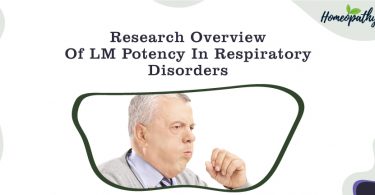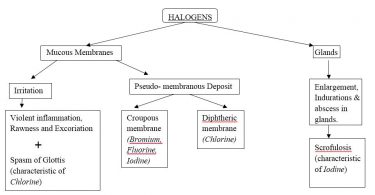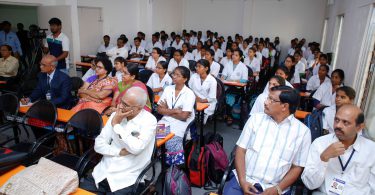
Abstract:
Background: Despite all the genetic and epigenetic pressures, we don’t get cancer most of our lives because of our immune systems. Cancer is, in essence, a failure of the immune system to regulate abnormal cellular growth. Cancer is not a death sentence. Fear, anxiety, anger, and helplessness are all natural reactions when processing a cancer diagnosis. However, allowing these emotions to overcome you is counterproductive to the healing process. ‘iscador’ as its homoeopathic preparation, has been found beneficial in treating patients with some forms of cancer.
Aims and objectives: To see the importance of Iscador therapy in field of homoeopathy
Material and methods: The project work was done following various books and websites.
Result: This study revealed the applied aspect of Iscador therapy by literature review.
Conclusion: The Iscador therapy has a vast area of study from the homoeopathic perspective. Specific work related to particular age groups and specific medicine needs to be carried out. The Iscador therapy has many possibilities in field of homoeopathy. Going by the concept of Organon of Medicine, it is expected to follow the totality of the symptoms and symptoms needs proper evaluation and only this will yield the uncommon symptoms, which are very apt for selection of a simillimum.
Key words: Iscador therapy, homoeopathy, mistletoe therapy, cancer, anthroposophic medicine, Viscum album, viscotoxins
Abbreviations: QOL – quality of life, NCIM – National Collection of Industrial Microorganisms, RCT – randomised controlled trials, COVID 19 – coronavirus disease 2019
INTRODUCTION: Mistletoe Therapy is a herbal preparation of the Mistletoe plant, which grows commonly in Northern Europe.1 The clinicians at NCIM prescribe preparations manufactured by ISCADOR AG, made of fermented aqueous extracts of the freshly harvested white-berried mistletoe (Viscum album L.) grown on different host trees. Host trees used are apple (Malus, M), oak (Quercus, Qu), pine (Pinus, P), elm (Ulmus, U). Mistletoe contains viscotoxins and lectins which have been shown to have a stimulating effect on the immune system.2
There is research to show that it stimulates the group of white cells in the immune system that treatments like radiotherapy and chemotherapy can sometimes lower. These cells are called the natural killer cells and the aim of giving this medicine is that a number of these cells will be increased in your body.2
In Europe, Viscum album L (mistletoe) is a commonly used complementary therapy by patients with cancer and is integrated into conventional oncology treatment programmes in Germany, Switzerland and Holland.2 In recent years it has been the subject of many randomised controlled trials (RCTs). Although there are some limitations to these studies due to poor design, a relatively consistent finding of these trials was a reduction in the adverse effects of chemotherapy and radiotherapy and/or improvement of quality of life of the patient (QOL).
Mistletoe Therapy can be given by mouth as a liquid, or by subcutaneous injection.3
AIMS and OBJECTIVE
1. To see the importance of Iscador therapy in field of homoeopathy
REVIEW OF LITERATURE
There has been an alarming increase in the incidence of cancer since the last century. This rise in incidence has been explained not only due to sophisticated detection techniques, but also due to an increase in the environmental carcinogens affecting the cell adversely, stimulating it to unlimited growth and multiplication – cancer.4
Iscador therapy is a type of treatment for cancer used by doctors trained in anthroposophic medicine. This therapy was developed in Switzerland by Rudolf Steiner at the beginning of the 20th century. Rudolf Steiner was Austrian-born and he developed the science of anthroposophy. The word anthroposophy means ‘wisdom of the human being’. It takes into account spiritual dimensions of the human being and the world. Steiner introduced the concepts of anthroposophy into all aspects of life — education, medicine, pharmacy, agriculture, economics, art and religion. This was how anthroposophic medicine was born. 4
Anthroposophic medicine is based on the spiritual scientific view of a healthy human being who is in close harmony and interaction with the different levels of creation and has lost this when in a state of ill health. This involves a holistic approach and hence is compatible with other holistic systems of medicine.4 Training in anthroposophic medicine is available only to doctors already trained in conventional or alternative systems of medicine.5 The substances from which anthroposophical medicines are prepared are essentially natural and taken from the mineral, plant and animal kingdoms. Medicines are prepared according to homoeopathic principles and hence anthroposophic medicine and homoeopathy easily go hand in hand.6
Iscador is the trade name of a group of anti-cancer treatments, all prepared from different types of mistletoe extracts.7 Treatment with Iscador aims at intensifying the body’s own forces against the cancer cell’s tendency towards autonomy.8 Iscador is a complementary rather than an alternative medicine. It is frequently prescribed in Europe by medical doctors including oncologists in addition to the conventional cancer therapies, radiation, surgery and chemotherapy. Nowadays, in Europe, mistletoe is a key component in conventional cancer therapy.3 Here in India, following training in anthroposophic medicine, homoeopaths have begun to use Iscador for cancer cases. Iscador is available in the US under the brand name Iscar.10
There are about 1400 mistletoe species around the world. One thing that they all have in common is that they do not root in the mineral soil but live on other, generally woody, plants. Only white-berried mistletoe is used to treat cancer.11
Mistletoe contains among other things, two groups of toxins: viscotoxins and mistletoe lectins. Viscotoxins and mistletoe lectins are proteins capable of being broken down in the digestive tract. The molecular structure and pharmacological actions of viscotoxins are closely related to those of snake venoms. They have cytolytic action, i.e., they dissolve cancer cells. The mistletoe lectins are related to castor-oil plant lectins. They have cytostatic properties, i.e., they inhibit the growth of cancer cells.3
One of the primary functions of Iscador is that it stimulates parts of the immune system that can slow the growth of cancer cells and does so with very limited side effects. For this reason, it is often used in conjunction with conventional therapies such as surgery, chemotherapy and radiation therapy.12
Many patients treated with Iscador report an improved quality of life, feeling better and more positive and in need of less pain relief medications.9
Advantages:
Extensive research and clinical experience demonstrate the vast array of health benefits that Iscador provides:9
- Improvements in general condition (increase in appetite and weight) and vitality
- Restoration of normal sleep pattern
- Improvement in mental state (depression/anxiety, courage to face life and ability to take initiative)
- Improvement in quality of life
- Prolongation of life
- Other major effects include
- Reducing adverse effects from chemotherapy and radiation therapy
- Immunomodulatory effect
- Inhibition of malignant growth
- Reducing the risk of recurrences and metastases
Side effects of treatment
The preparation taken by mouth seems to be very safe. Although it does not agree with everyone, reported side effects are low. This is because we are using such low doses.9
Length of course of treatment
When you are taking the preparation by mouth, we usually recommend treatment for 12 months. After that time, Mistletoe therapy may be stopped or an occasional dose may be given. You will be able to discuss this as part of your treatment plan.10
Other factors
In addition to the ISCADOR treatment, all the other things you do are important, such as;
- Looking at lifestyle
- Nutrition
- Acupuncture
- Mindfulness
- Homeopathic medication
- Counselling, relaxation and visualisation
- Chemotherapy and radiotherapy
- Any other approach that you choose to support you through the cancer diagnosis.
THERAPEUTIC APPLICATIONS 7
- Early malignancies. Here it has the greatest scope, especially in Stage 0, i.e. Carcinoma-in-situ.
- Advanced malignancies. Here it is of considerable help in inoperable tumours, recurrences, widespread metastases and in terminal cases, it brings about palliation.
- It is used as a prophylactic for malignant lesions in pre-cancerous states, where regression of the lesion takes place.
- Benign neoplasms.
- Surgery. Non-operable tumours become operable through delineation of the tumour by Iscador therapy. During the operation, it helps prevent dissemination of the tumour. Post-operatively, it hastens a smooth convalescence. Early follow-up treatment by Iscador results in a significant reduction in the incidence of recurrences and late metastases by about 30-40 %.
- Concurrent with chemotherapy and/or radiation, Iscador prevents or reduces toxic side effects, promotes tolerance as well as dispersion of the tumour.
- Cancer patients treated with Iscador and followed up for a long time with regular laboratory investigations show no toxic symptoms, apart from the desirable rise in body temperature, transient rise in leucocytes and rise in lymphocytes. No harmful side effects have been reported. Even if Iscador is given intensively for many years, there is no depression of the bone marrow unlike chemotherapy and radiation.
- Iscador therapy stimulates the form-giving processes and forces in the human organism against the tendency to unregulated proliferation of the cell, which is seen in cancer.
Iscador preparations are classified according to the host-tree of the mistletoe used in their preparation. Depending on the localization of the primary tumour and on the sex of the patient, the type of Iscador preparation is selected. Metastases are treated with the same preparations as the primary tumour.15 Special metal combinations are used to increase and potentiate the action of Iscador on specific organs. Each preparation is available in a number of strengths. The different strengths permit variation in the intensity of the treatment, depending upon the clinical state of the patient. The route of administration is usually subcutaneous; only in the case of intracranial tumours is the oral route usually used. The time of administration is usually in the morning, which is the time of the physiological rise of temperature.13 The frequency of administration varies according to the type and location of the tumour and the judgement of the physician. The duration of the treatment is quite long, extending over a number of years. The changes in the type of Iscador preparations, dose, frequency, etc., are managed through the assessment of the clinical response and the laboratory data.8
REACTIONS UNDER ISCADOR THERAPY9
- Inflammatory reaction with increased flow of blood and swelling in the region of the tumour is seen occasionally with usual subcutaneous injections. This passes off in a few hours.
- Slight increase in body temperature occurs which is desirable as a curative process.
- Transient increase in the neutrophil component of white blood cell count, which persists for some hours.
- Immune stimulation as a whole and consequent inhibition of tumour development which leads to :
1) improvement in the general condition.
2) increased appetite.
3) gain in weight.
4) improved sleep.
5) decrease in fatigue and depression.
6) stimulation of urinary and bowel functions.
7) reduction or disappearance of pain. - Increased tolerance to irradiation and/or chemotherapy.
- Relief of pain and subjective improvement in the patient are most striking even in advanced stages of cancer, inspite of the progressive course of the tumour. 7
COURSE OF TUMOUR UNDER ISCADOR THERAPY9
- Stationary for some time.
- Occasional regression of the tumour.
- Slowing down or cessation of tumour growth.
- Reduced incidence of metastases or secondaries, or prevention of extension.
- Reduced incidence or recurrences after operation and/or radiation.
Iscador medications are imported into India and are fairly expensive, though much cheaper than the costs of conventional cancer treatments. It should be remembered that Iscador needs to be continued for several years, with few gaps in between as suggested by the treating physician.
Iscador potentiates the action of homoeopathic therapeutics as both act on the immune mechanism. When understood and practised, these therapies become limitless in their possibilities for development and their power to treat the millions of sick people in the world.
MISTLETOE THERAPY AND COVID -19 15
Cancer patients who want to be vaccinated against COVID-19 are advised to suspend their mistletoe therapy three days before the planned vaccination date (also before the second date). Even if there is no vaccination reaction, it is recommended to resume the mistletoe therapy not until one week after the COVID-19 vaccination. If vaccination reactions occur, interruption of mistletoe therapy is indicated until the acute symptoms have subsided.
Mistletoe preparations are used for the adjuvant treatment of tumorous diseases and do not have any weakening effect on the immune system (non-immunosuppressive). Therefore, mistletoe therapy does not increase the risk of infection for cancer patients, and there are indications that the immunomodulatory effect of mistletoe preparations may even provide some protection against infection.
OBSERVATIONS
After following the study, it became quite apparent that the subject chosen is an area for research. The Iscador therapy has many possibilities in field of homoeopathy. The possibilities need to be worked out and the probabilities of the simillimum within the knowledge of Organnon of medicine and psychology and beyond the existing knowledge needs careful evaluation.
DISCUSSION
The Iscador therapy has a vast area of study from the homoeopathic perspective. Specific work related to particular age groups and specific medicine needs to be carried out. The Iscador therapy has many possibilities in field of homoeopathy. Going by the concept of Organon of Medicine, it is expected to follow the totality of the symptoms and symptoms needs proper evaluation and only this will yield the uncommon symptoms, which are very apt for selection of a simillimum.
CONCLUSION
The Iscador therapy in homoeopathy is a subject which more needs clinical orientation from the homoeopathic view point. Several works have been previously carried out in this area but due to a short time frame, the results have been not specific. Moreover, the works done in this aspect, have been more oriented to a particular age group. More works need to be done in regards to patients of particular economic strata, habitat aspect and nature of their daily routine, including the profession which they belong. The occupation has at times its own hazard and needs to be properly evaluated in order to find the effect of medicine in such individual.
REFERENCES
- Ernst E, Cassileth BR. The prevalence of complementary/ alternative medicine in cancer. A systematic review. Cancer 1998,83:777-782.
- Viscum album. In: Homoeopathic Pharmacopoeia Convention of the United States: Homoeopathic Pharmacopoeia of the United States. Washington, DC: 2002:Monograph 9444 Visc.
- Mansky PJ. National Center for Complementary and Alternative Medicine: Phase I study of gemcitabine and mistletoe in patients with advanced solid tumors; NCCAM-02-AT-260.
- Decker G. Patients are talking about Iscador (mistletoe). Clin J Oncol Nurs 2001;5:183-184.
- The Mistletoe Preparation Iscador in Clinical Use – Rita Leroi, MD.
- Iscador – Mistletoe preparations used in anthroposophically extended cancer treatment – Robert W. Gorter, MD.
- http://wiki4cam.org/wiki/Iscador_Therapy_for_Cancer.
- Ernst E, Cassileth BR. The prevalence of complementary/ alternative medicine in cancer. A systematic review. Cancer 1998,83:777-782.
- Decker G. Patients are talking about Iscador (mistletoe). Clin J Oncol Nurs 2001;5:183-184.
- Mengs U, et al. Mistletoe extracts standardized to mistletoe lectins in oncology: Review on current status of preclinical research. Anticancer Res 2002;22:1399-1407.
- Bocci V. Mistletoe (Viscum album) lectins as cytokine inducers and immunoadjuvant in tumor therapy. A review. J Biol Regul Homeost Agents 1993;7:1-6.
- Beuth J, et al. Immunomodulating ability of galactoside-specific lectin standardized and depleted mistletoe extract. Arzneimittelforschung 1995;45:1240-1242.
- Mengs U, et al. Mistletoe extracts standardized to mistletoe lectins in oncology: Review on current status of preclinical research. Anticancer Res 2002;22:1399-1407.
- Bocci V. Mistletoe (Viscum album) lectins as cytokine inducers and immunoadjuvant in tumor therapy. A review. J Biol Regul Homeost Agents 1993;7:1-6.
- Beuth J, et al. Immunomodulating ability of galactoside-specific lectin standardized and depleted mistletoe extract. Arzneimittelforschung 1995;45:1240-1242.
About Author:
Dr Nihal Kumar M.D. (HOM)





